In the heart of Milan, the MEET Digital Culture Center is currently hosting Realia, the first Italian solo exhibition of Canadian visual artist Sabrina Ratté. Running from March 13 to June 1, 2025, this immersive showcase delves into the convergence of technology and biology, inviting visitors to explore speculative ecosystems where the digital and natural worlds intertwine.
The technique used is generative: objects from everyday life are scanned or otherwise digitised, and then used to create forms that are either evolutions (or involutions) of those objects, or use the given geometry as a basis for growing something else. Do not expect anything too immersive or interactive, though: it’s a series of animated videos displayed in rooms with different surface treatments.
The Artist: Sabrina Ratté
Sabrina Ratté, born in Quebec in 1982, has been a prominent figure in digital art since the early 2010s. Her work often explores the interplay between architecture, virtual spaces, and the organic world, creating immersive environments that challenge perceptions of reality. Ratté’s art has been exhibited internationally, including at the Centre Pompidou in Paris and the Museum of the Moving Image in New York.
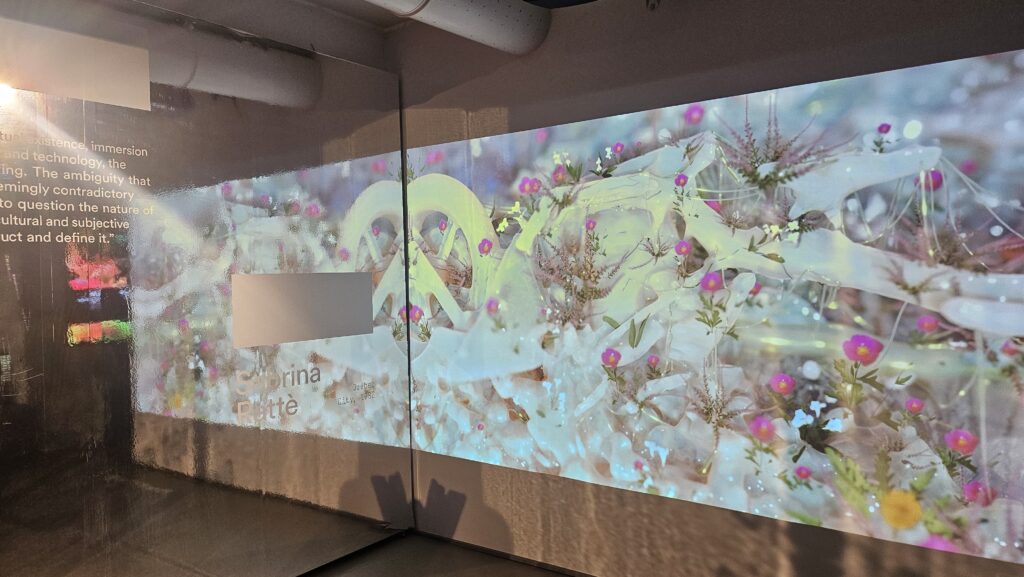
The Exhibition: Realia
Realia presents three of Ratté’s recent works, displayed in the galleries of the Digital Culture Center, plus a special display in the last, “immersive” room.
Inflorescences
As you step into the first gallery of Realia, you’re greeted by the voice of Sabrina Ratté herself—her words resonating from the video installation behind you in a calm yet deliberate introduction, which sets the philosophical tone of her work. Her aim is to reflect on a world where the artificial and the organic are no longer in opposition, but part of the same evolutionary narrative, and lost natural worlds are preserved and reborn into the digital one.
The centrepiece of the first room is Inflorescences, a video installation that transports us into a speculative ecosystem of the future where the boundaries between plant, machine, and the unknown dissolve. In a time after humans, Earth is emptied of our presence and still bears the marks of our existence through the technological debris we’ve left behind. Yet instead of a bleak, dystopian aftermath, Inflorescences offers a nuanced meditation on continuity and transformation. Discarded electronic devices—remnants of forgotten use and failed obsolescence—become the fertile ground for new life.
Ratté collected these abandoned objects from various locations and scanned them using 3D technology. In her hands, they are reborn as habitats and breeding grounds for strange new life forms: hybrid organisms that pulse and bloom with an eerie vitality.
The video sequences bring these beings to life with uncanny grace. Floral structures grow from circuit boards, metal casings, chips. The effect is haunting yet oddly hopeful, as if the Earth, left to its own devices, has found a way to reclaim and reimagine even the most toxic remnants of human invention.
What’s particularly striking is the aesthetic language of the work: vibrant and luminous, almost iridescent textures invite the viewer into intimate observation. It’s not just about ecological recovery, but about beauty—an alien, synthetic beauty that challenges our assumptions about what is natural or desirable. These creatures are not grotesque mutations; they are graceful, otherworldly testaments to adaptation and resilience.
In this first encounter with Realia, the tone is set: what we call waste can become substrate, and what we see as dead technology can be reanimated through imagination. It’s a powerful reminder that the digital—so often framed as cold, sterile, or disconnected—can also be a medium of regeneration, storytelling, and surprising beauty.
Cyberdelia
The second gallery offers a more intimate and participatory experience: Cyberdelia. Unlike the contemplative observation demanded by the first room, with lights and mirrors and secondary screens enhancing the videos, this installation invites you to engage through a sort of digital ritual.
The room offers a set of video works, accompanied by their soundscape co-composed by Sabrina Ratté and musician Roger Tellier-Craig, with the contributions of artificial intelligence. These audiovisual visions are paired with cards, each one representing a metaphysical concept. The invitation is to “consult the oracle”: visitors are encouraged to choose one of the cards, then place it on a glowing reader. In response, the chosen card triggers a corresponding video projection.
The title, Cyberdelia, evokes the spirit of a particular cultural moment: the cyberculture of the 1980s and ’90s, when digital technology was imagined as a portal to transcendence, and the virtual was about freedom, exploration, altered states of consciousness. Ratté resurrects that dream but reframes it for our current reality, one weighed down by ecological anxiety and the consequences of hyper-connectivity.
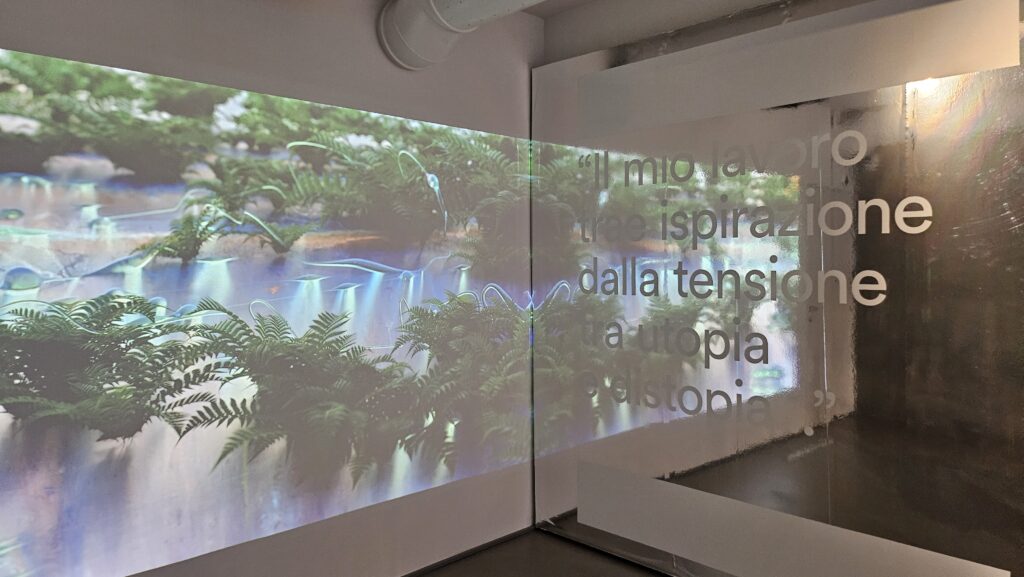
Plane of Incidence
As you move into the third and final gallery, the tone shifts again. The ambience goes back being quieter, mirrors appear again, and you find yourself in a room with two videos facing each other. Here, the work Plane of Incidence unfolds not so much as a narrative but as an ontological question. What is alive? What is dead? And what forms of consciousness or memory might linger in between? At the heart of this installation is a proposition both poetic and disquieting: what if objects, too, possess a kind of soul? What if the tools we discard, the devices we break, the trinkets we leave behind on sidewalks and in alleyways, are more than inert matter? Plane of Incidence opens up that imaginative space, drawing from traditions as old as animism and as futuristic as speculative evolution to propose a world where the boundaries between the inert and the animate are radically porous.
To create this work, Ratté collected abandoned objects—found by chance on the streets of Montreal and Marseille. These were not carefully curated artefacts but rather the cast-offs of urban life: broken electronics, rusted mechanical parts, forgotten toys, mundane plastic debris. Each was digitally scanned and lifted into a virtual plane, removed from the noise of the real world and recontextualised within luminous, otherworldly environments. Once in this new space, the objects begin to change. They don’t just sit as remnants of a bygone era—they morph, mutate, and merge with imagined biological entities. Shapes stretch and contort with uncanny grace; surfaces bloom and pulse with an internal rhythm; limbs, tendrils, wings—something not-quite-organic, not-quite-machine—emerges. These new hybrid beings occupy a realm where nature and artefact are no longer distinct, but fluidly entangled.
The title itself, Plane of Incidence, evokes geometry and optics—a point where light strikes a surface, where angles and refractions shape what we perceive. But here, it also speaks to philosophical intersections: between being and becoming, object and subject, presence and absence. Ratté’s work lives precisely in that liminal zone.
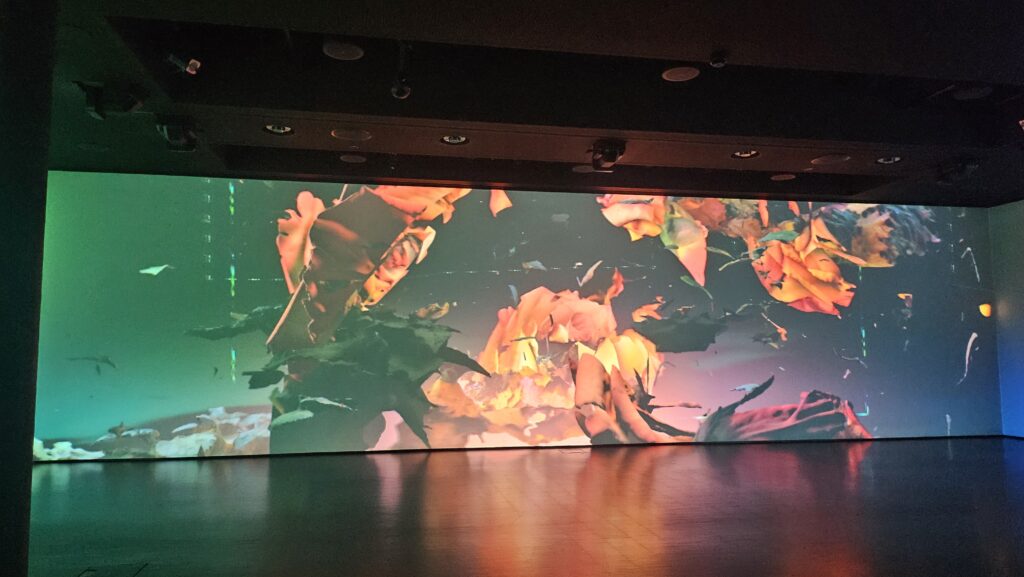
Floralia
The heart of the show is a large, dark room where every surface is occupied by Floralia, a four-act digital installation that pulses with memory, absence, and renewal. It is the most expansive and contemplative moment of Realia.
The setting is anchored firmly in loss: Floralia imagines a world where botanical life as we know it has vanished—plant species rendered extinct by climate catastrophe, human negligence, or the inevitable entropy of time. In this imagined tomorrow, what remains is not the flora itself, but a virtual archive: a digital sanctuary where the spectral presence of these plants is preserved, catalogued, and quietly mourned. The space is configured as a kind of memory vault. Through four cinematic movements, visitors traverse an unfolding landscape of archived plant samples, but this is no sterile repository of taxonomies; the digital environment pulses with strange vitality, the visuals seem to glitch, dissolve, and reform—not from technological error, but as though the memories of the plants themselves were interfering with the simulation. Instead of static data sets, they feel like haunted presences, pressing against the boundaries of their own containment.
Is it worth the visit?
I would say yes, but it depends on what you’re looking for. Realia is more an art exhibition that explores possible futures where technology and nature are not adversaries but collaborators, and yet it doesn’t do so in a way that puts technological experimentation at the centre. While the artist’s work challenges us to rethink our place in the world and inspires hope for a harmonious coexistence, her methods are left in the shadows and this might be disappointing for technological geeks such as myself.
And yet, in an age where digital art is often associated with coldness or detachment, Ratté’s work stands out for its warmth and humanity. The beauty of the digital in Realia lies in its ability to mirror the complexities of life, growth, decay, and rebirth, a reminder that technology, when intertwined with artistic vision, can offer profound insights into our existence.
And the MEET Digital Culture Center is a must-see experience if you’ve never been there, and a place to monitor constantly for the cutting-edge reflections they host. If you visit, let me know what you think. You have time until June, 1st.

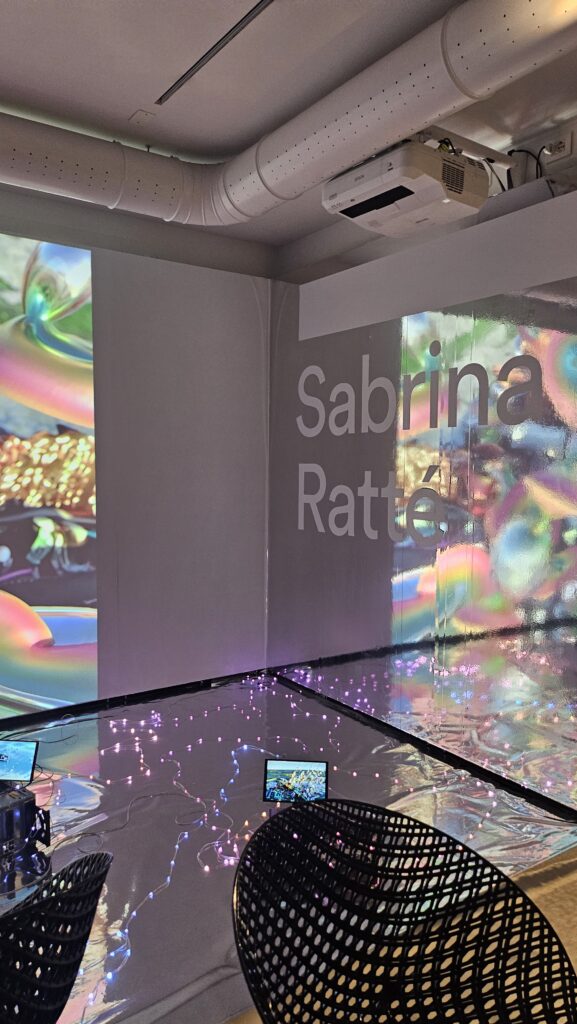

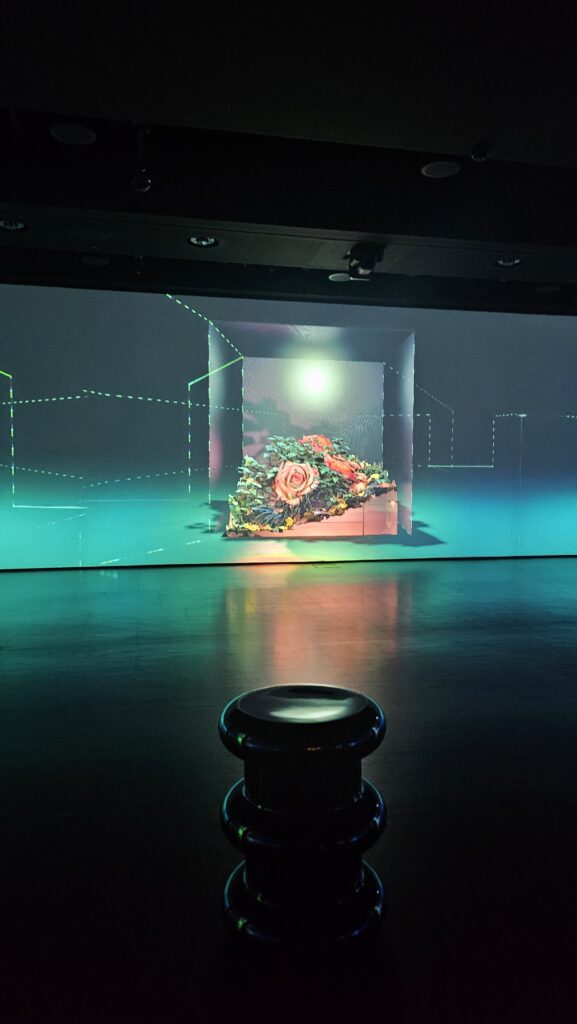

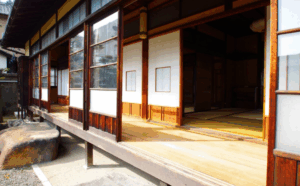
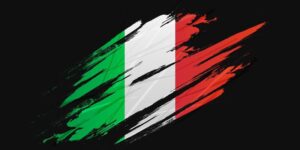



No Comments